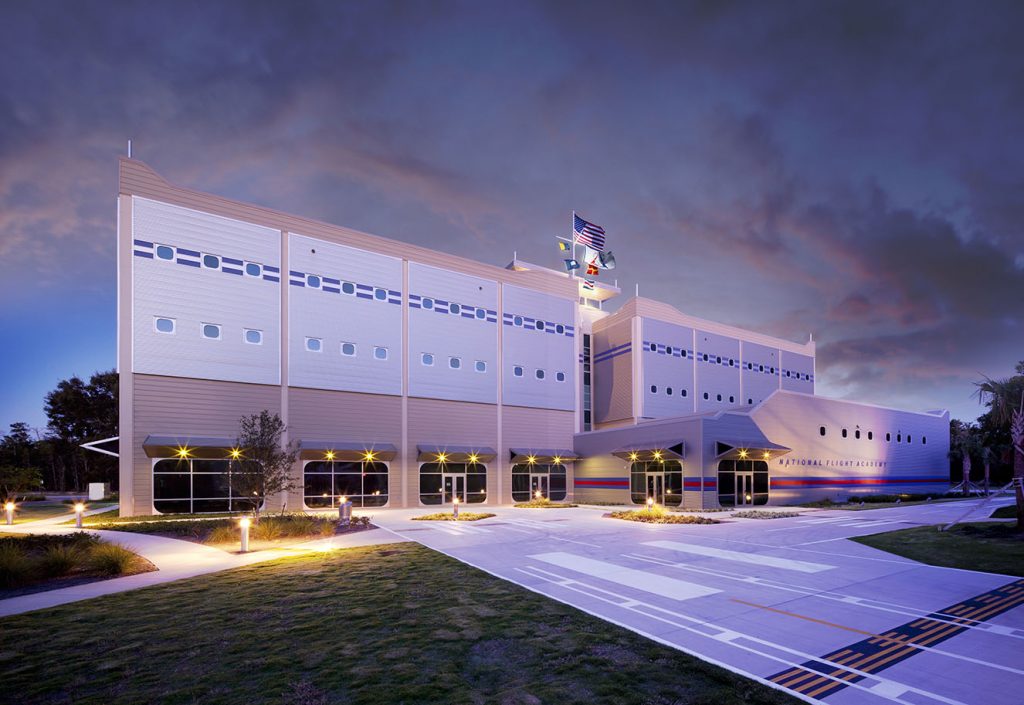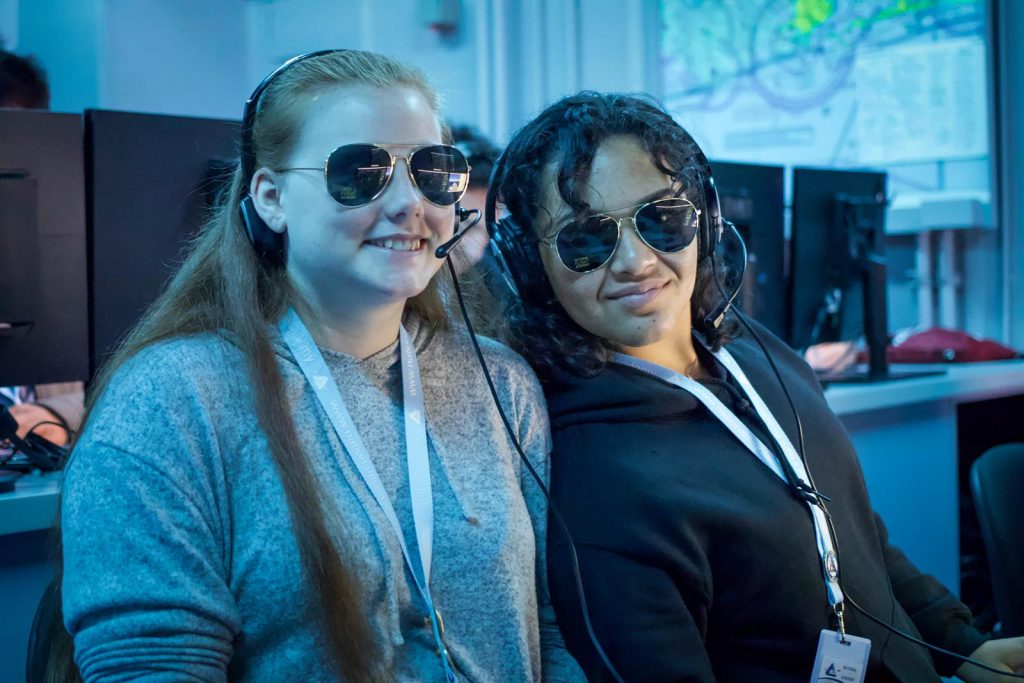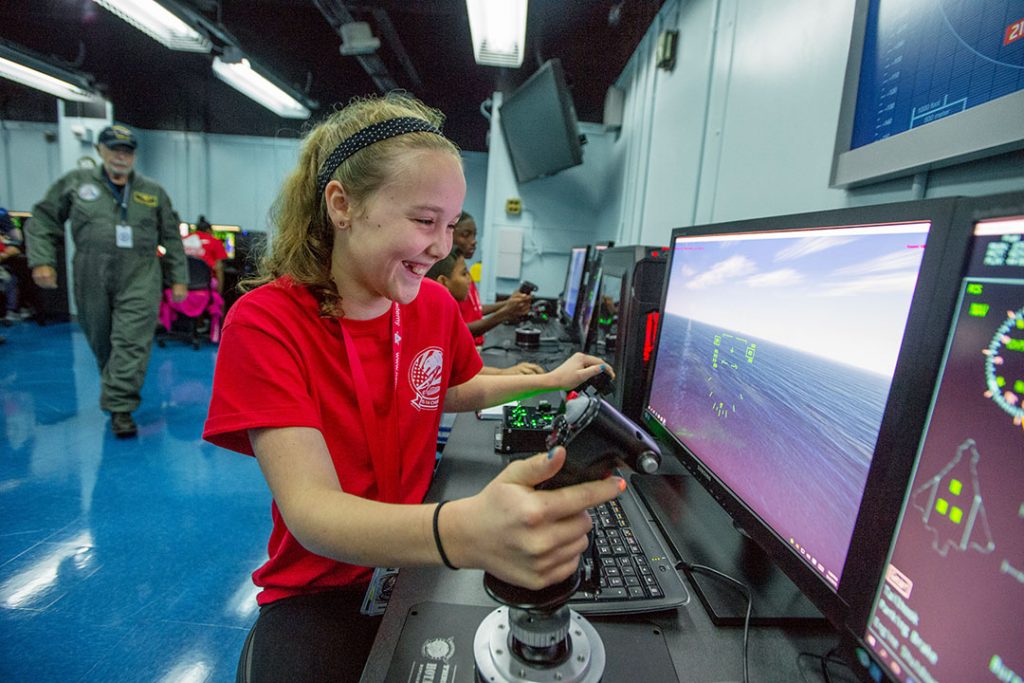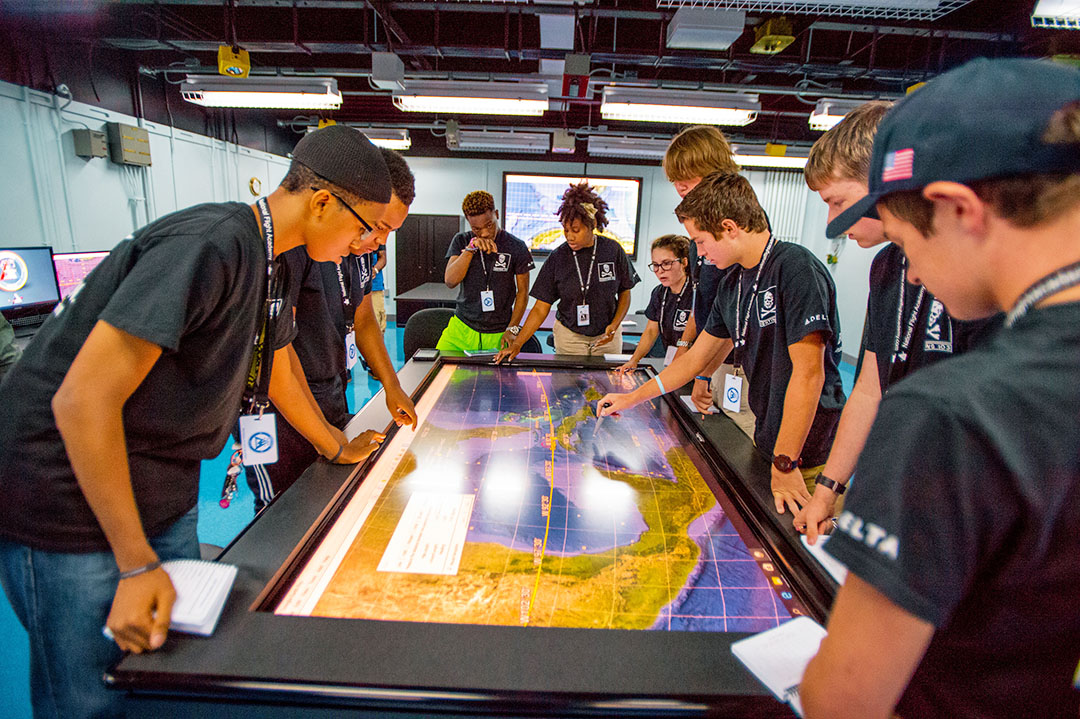At the National Flight Academy students can immerse themselves with camps and virtual experiences that reveal the wonders of aviation
The Academy is in Pensacola, Florida and is an educational experience that immerses students into the United States Military and aviation world. The academy hopes to re-inspire students to explore the ever-expanding world of STEM.
The National Naval Aviation Museum: A Legacy of Excellence
On June 8, 1963, The Naval Aviation Museum opened to the public in a modest 8,500-square-foot warehouse with only eight aircraft. Across many decades, the museum had four phases of expansion, building upon that first couple thousand feet. Additions were built to make more room for displays, aircraft were added, collections were brought in from all branches of the military and a full-time staff was added.

Eventually, after years of development, the museum realized that these collections and displays were not enough. They wanted an interactive and educational experience for youth. This desire for kids to have hands-on learning experience was realized in the form of the National Flight Academy.
The National Flight Academy was created to give students an in-person educational experience where they could explore the world of STEM, interact with other students and learn about future career opportunities. After several years of planning and raising millions of dollars, their idea became a reality, and the academy had its first classes in 2012.
STEM Programs Available at the National Flight Academy
The National Flight Academy has expertly created a variety of STEM-focused programs that differ in length and difficulty. All programs have carefully mapped out curricula that follow Florida State Education Standards for Math and Science.

“Adventure,” the one-day program for 3-12 graders, introduces students to necessary STEM skills. Students will learn about drones, hurricanes and tsunamis. They will also get the opportunity to fly the X-12B Triad, the National Flight Academy’s experimental aircraft. With mini missions that include hands-on collaborative work, this program is perfect for younger students who are relatively new to STEM.
For those looking for a more intensive and interactive program, The National Flight Academy has two overnight programs. The shorter, three-day program, “Cruise,” is designed for grades 5-12 and considered an introduction to the six-day deployment. Students will be introduced to the fundamental elements of aviation like target drops and hovering. Students will interact in a “team squadron format” to complete simulation missions. These missions will require creative thinking, collaboration, critical thinking and problem-solving. While developing those skills, students will also be introduced to subjects like math and physics.

at the Salt Lake City International airport for the Junior Achievement of Utah for the Delta Air Lines Storefront on Sunday July 31,2016. Photographer: Chris Rank/ Rank Studios
The National Flight Academy’s renowned program, “Ambition,” immerses middle and high school students in a six-day program of high intensity and creativity. Blending advanced technology, flight simulations and virtual reality, with simulations of missions, “Ambition” is unlike any other STEM experience. Students, known as “Ambition eXperimental Pilots,” will live like naval aviator on a modern aircraft. The missions that progressively get harder will force students to use the basic principles of aviation they learned through critical thinking and collaboration. Students will not only come out of this program with a new appreciation for STEM, but they will also have improved science and communication skills.
Virtual Opportunities
While the National Flight Academy and National Naval Aviation Museum have remained closed because of COVID-19, there are still virtual opportunities waiting for kids. Students can spend hours searching through the museum’s online database, which contains collections of war letters, records and artwork. A newly created virtual tour still allows students to explore the museum and all the exhibits and displays it holds. The tour includes over 100 panoramas, leaving out nothing so students can have the full immersive experience into the history of naval aviation. Students can take their time exploring the massive museum and zoom in or out so as not to miss any detail. “Hotspots” can be found on most panoramas and give some extra information about the exhibit or display. The tour also includes a series of cockpit panoramas for users to feel like they are the pilot sitting in these beautiful aircrafts.






